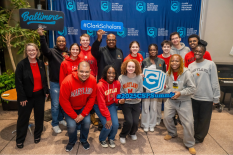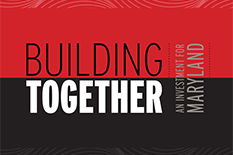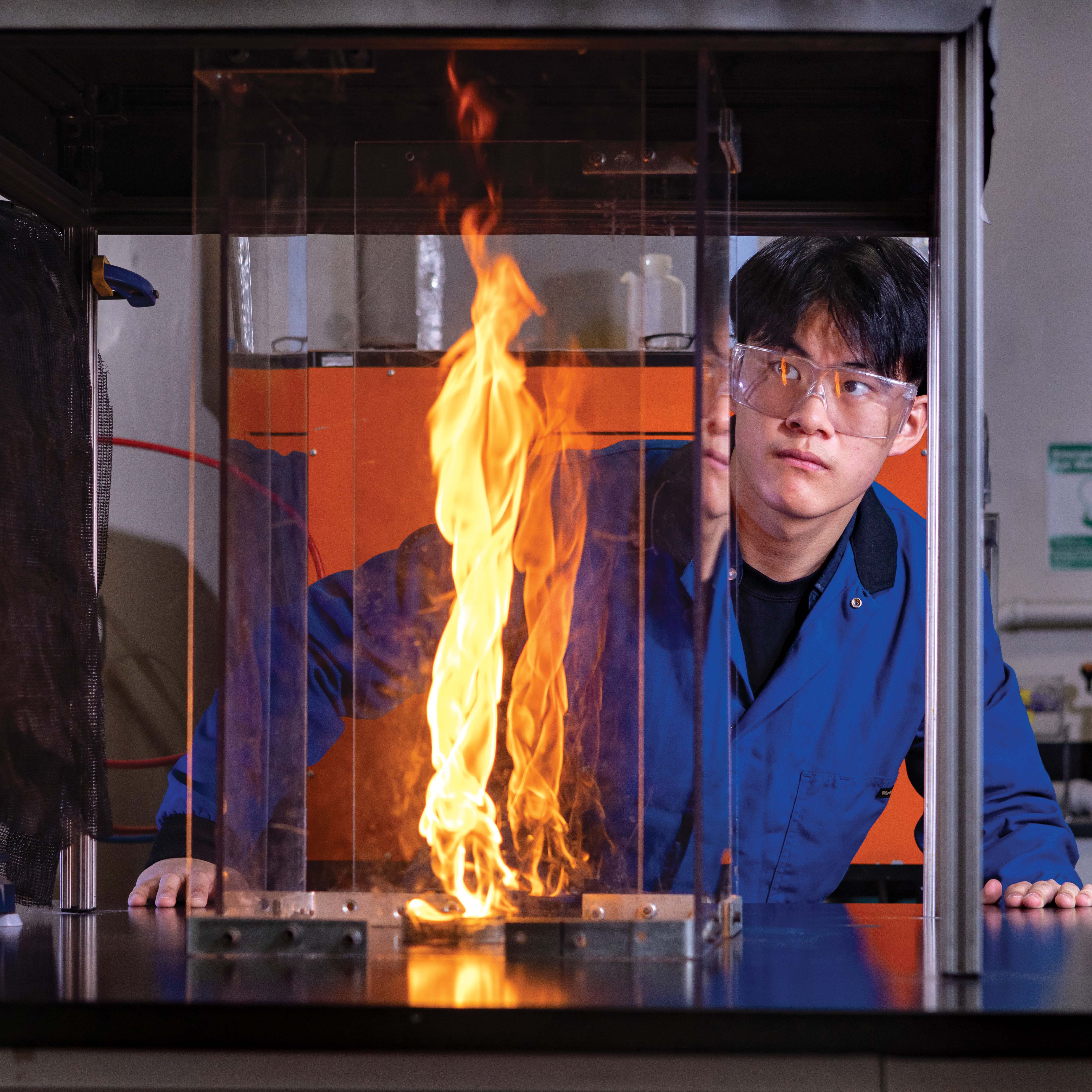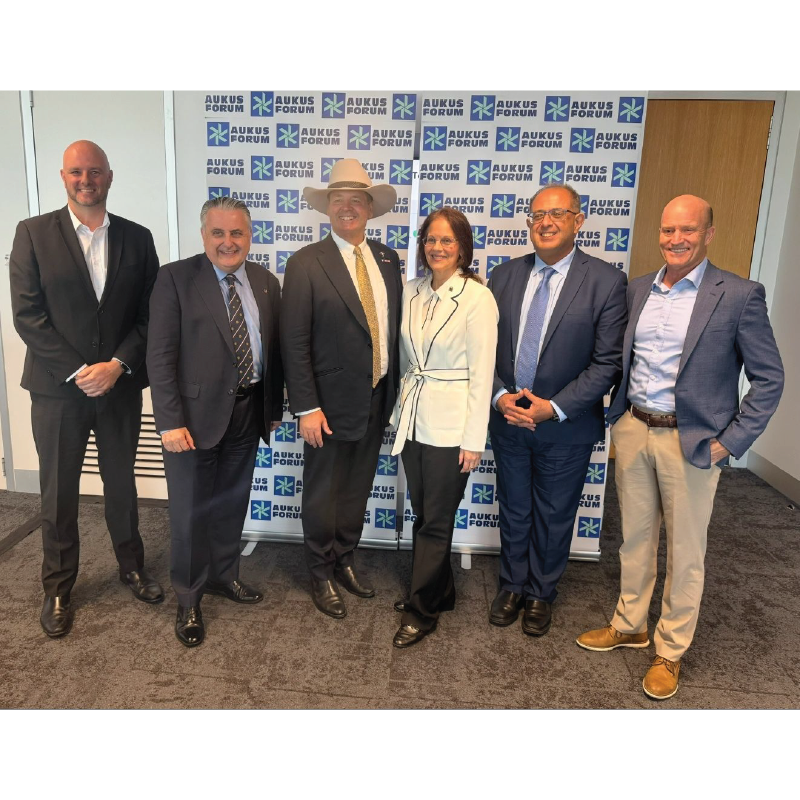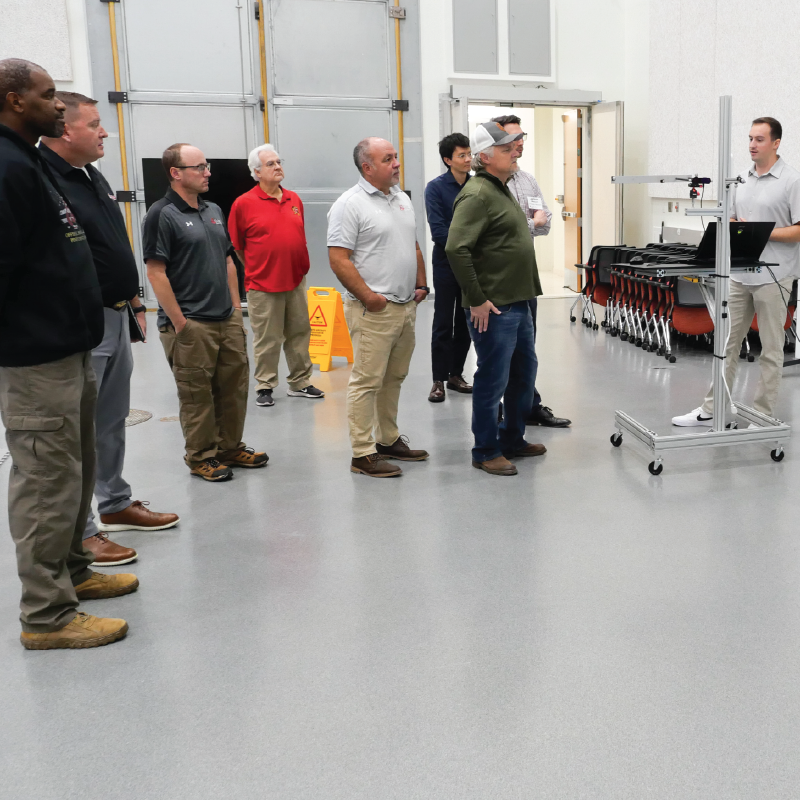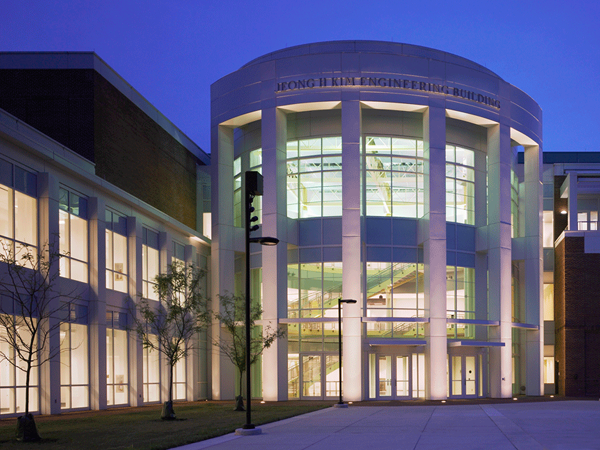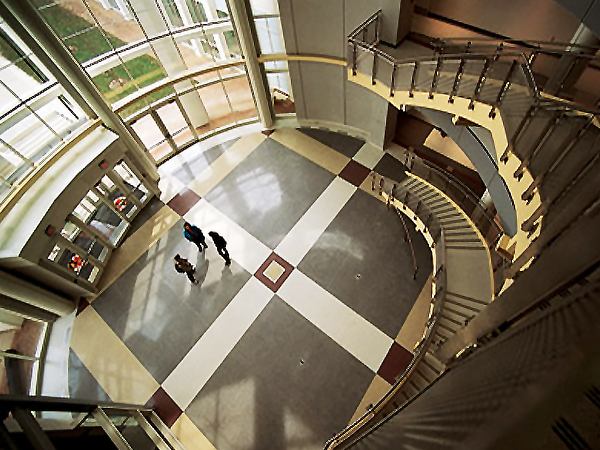News Story
Designing Engineering Leaders

How to make Baltimore Harbor swimmable?
A group of emerging engineers had some ideas—permeable sidewalks to reduce stormwater runoff, a “Harbor Health” water testing system, and an aquatic trash collector named “Gary the Bottom Feeder,” to name just a few.
A highlight of the first Clark Scholars Program Network (CSPN) Summit, a design challenge joined together 115 Clark Scholars from all 11 participating engineering institutions to present creative design solutions to the vital, and local, engineering problem.
“I had a great design team, and I learned a lot from the people around me,” said UMD Clark Scholar Tracy Osee, whose team created a water quality monitoring system with an accompanying water quality forecast app.
Since 2016, Clark Scholars number among the most promising engineers, scholars, researchers, and community members in the country. In 2023 the Clark Foundation, which will close its doors later in 2025, and the University of Maryland (UMD) named UMD’s A. James Clark School of Engineering as a new, permanent home for the CSPN.
The inaugural CSPN Summit was hosted by Johns Hopkins University (JHU), home of the first iteration of the Clark Scholars program. Held at JHU’s Pava Center for Entrepreneurship, the design challenge demonstrated the need to bring together the next generation of engineers poised to take on society’s grand challenges, including access to clean water, starting in our own backyards.
“We bring a variety of things to the table, since we’re all from different places and studying different disciplines of engineering,” said Georgia Tech Clark Scholar Karan Patel.
The scholars’ proposed solutions included everything from public works projects to community-facing digital tools. The winning team had the idea to store untreated wastewater in reservoirs—similar to the underground reservoir built in Paris before the 2024 Summer Olympics—to prevent it from polluting Baltimore Harbor. Using existing, underutilized infrastructure, wastewater would be held until it could be properly treated and released. The runners-up developed an eco-friendly recreational vehicle for use in the harbor—a two-seater paddle boat featuring a waste and algae collection system.
Beyond the design competition, the “Clarkies,” as Clark Scholars are known to call themselves, spent the weekend strengthening bonds through ice-breaker and team-building exercises, along with a Clark Scholars alum panel and Q&A. They gained industry insights through a Clark Foundation leadership panel and exclusive tour of M&T Bank Stadium, a landmark built by Clark Construction, a company headed for years by Clark School eponym A. James “Jim” Clark ’50, until his death in 2015.
“We feel very proud and privileged to be the home for the Clark Scholars Program Network,” said Samuel Graham, Jr., dean of the Clark School. “It is a collaborative effort, where we all have an opportunity to demonstrate the values of Mr. Clark.”
Serving as a judge for the design competition, Graham considered the grand challenges facing society and its future engineers. “No one institution has all the answers,” he said. “That is why we bring together the best minds from different backgrounds and perspectives to come up with the best ideas.”
Scroll down to get a closer look at the design competition.
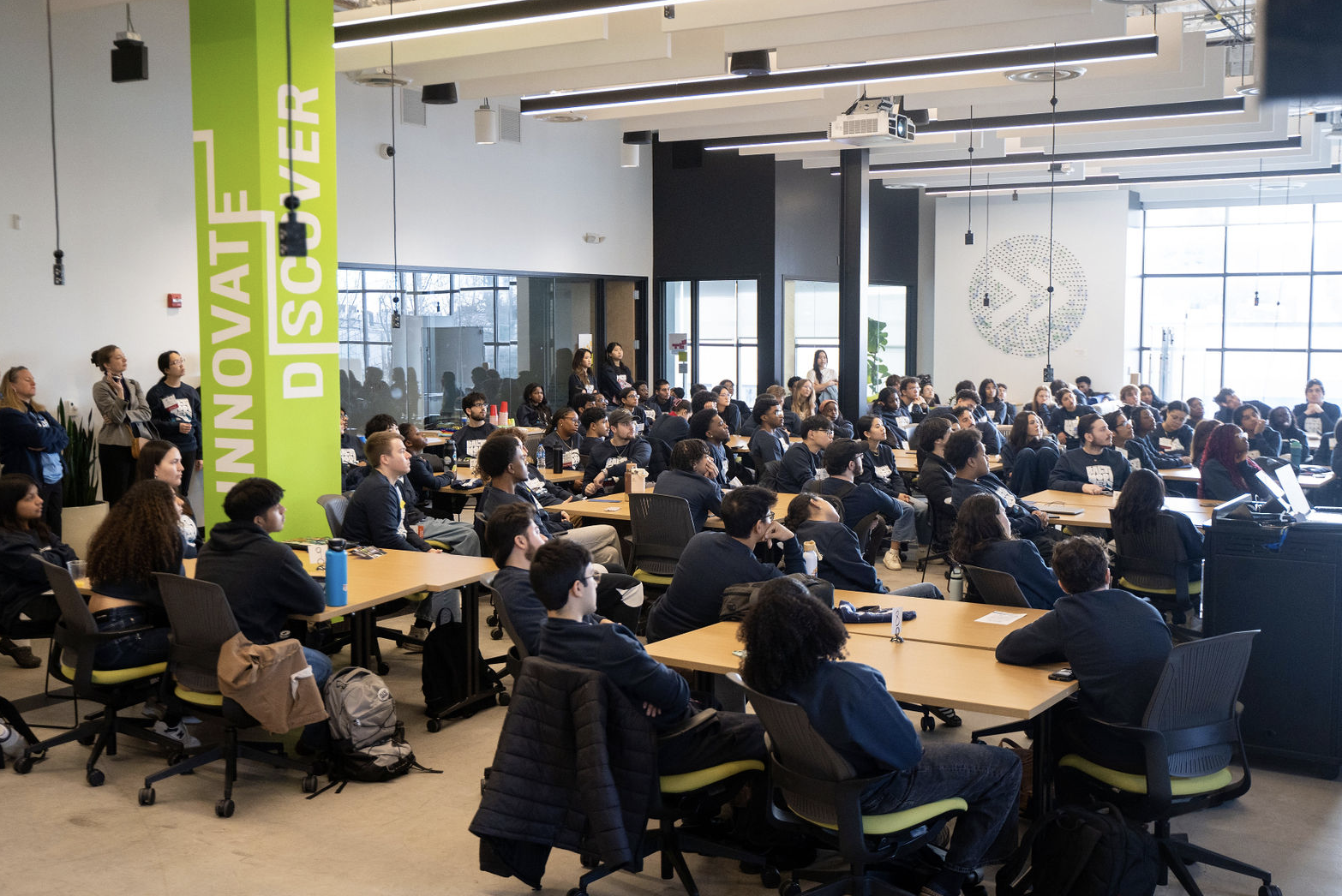
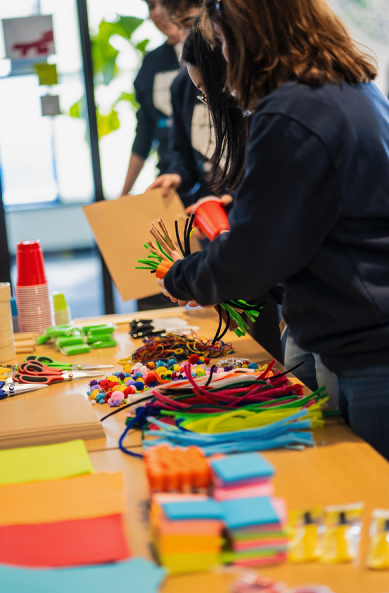

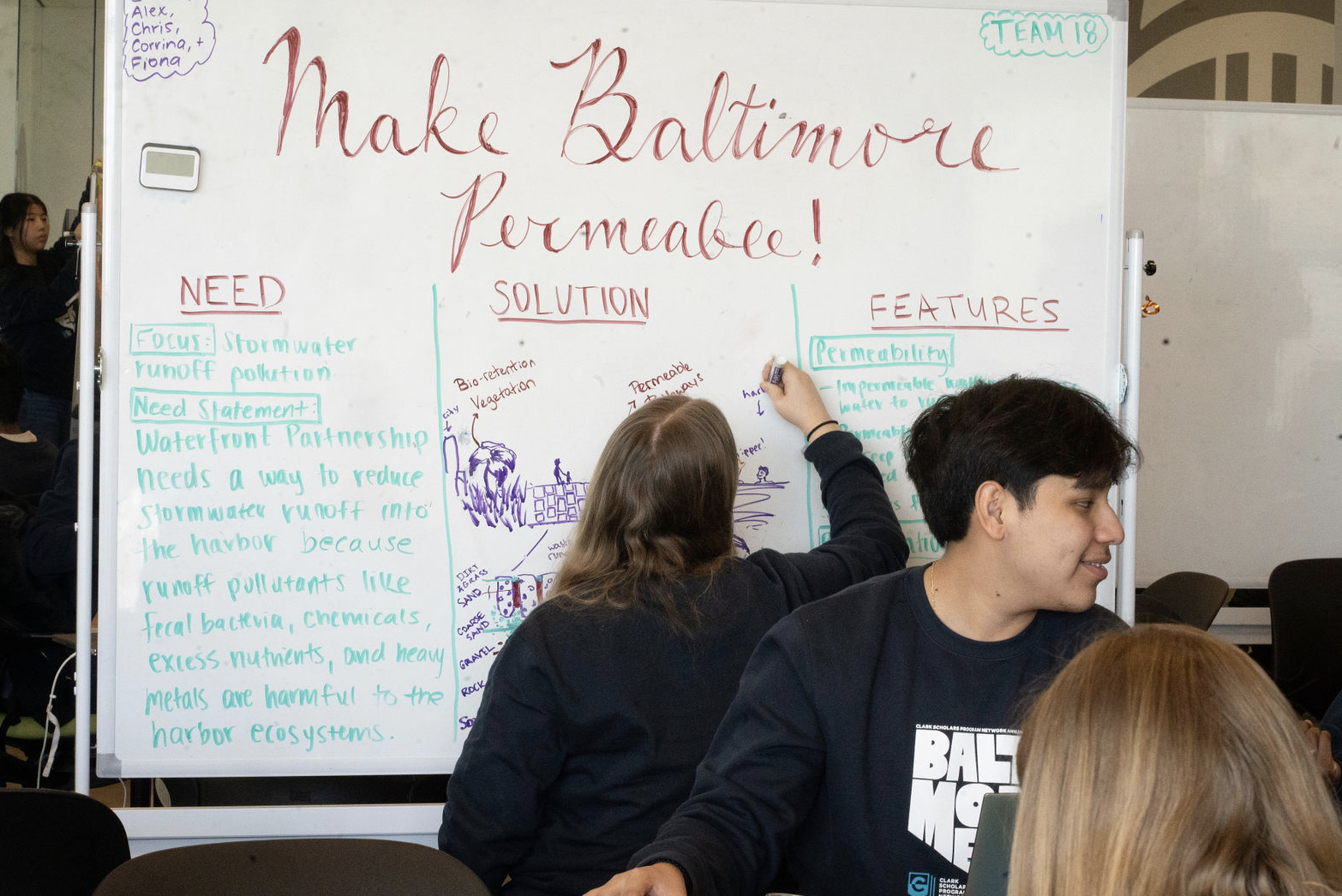
Teams develop creative solutions.
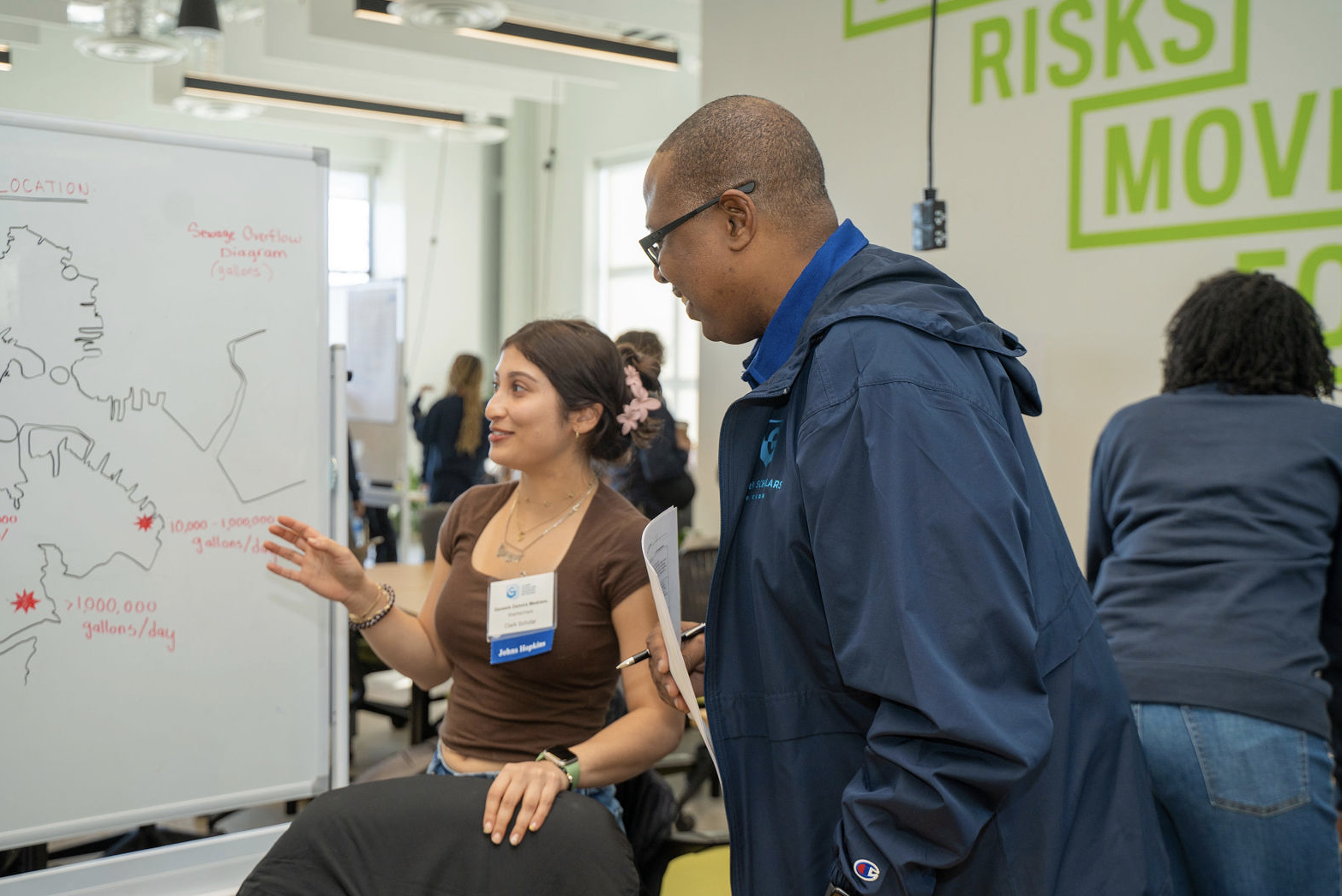
A student explains her team’s solution to Dean Graham.
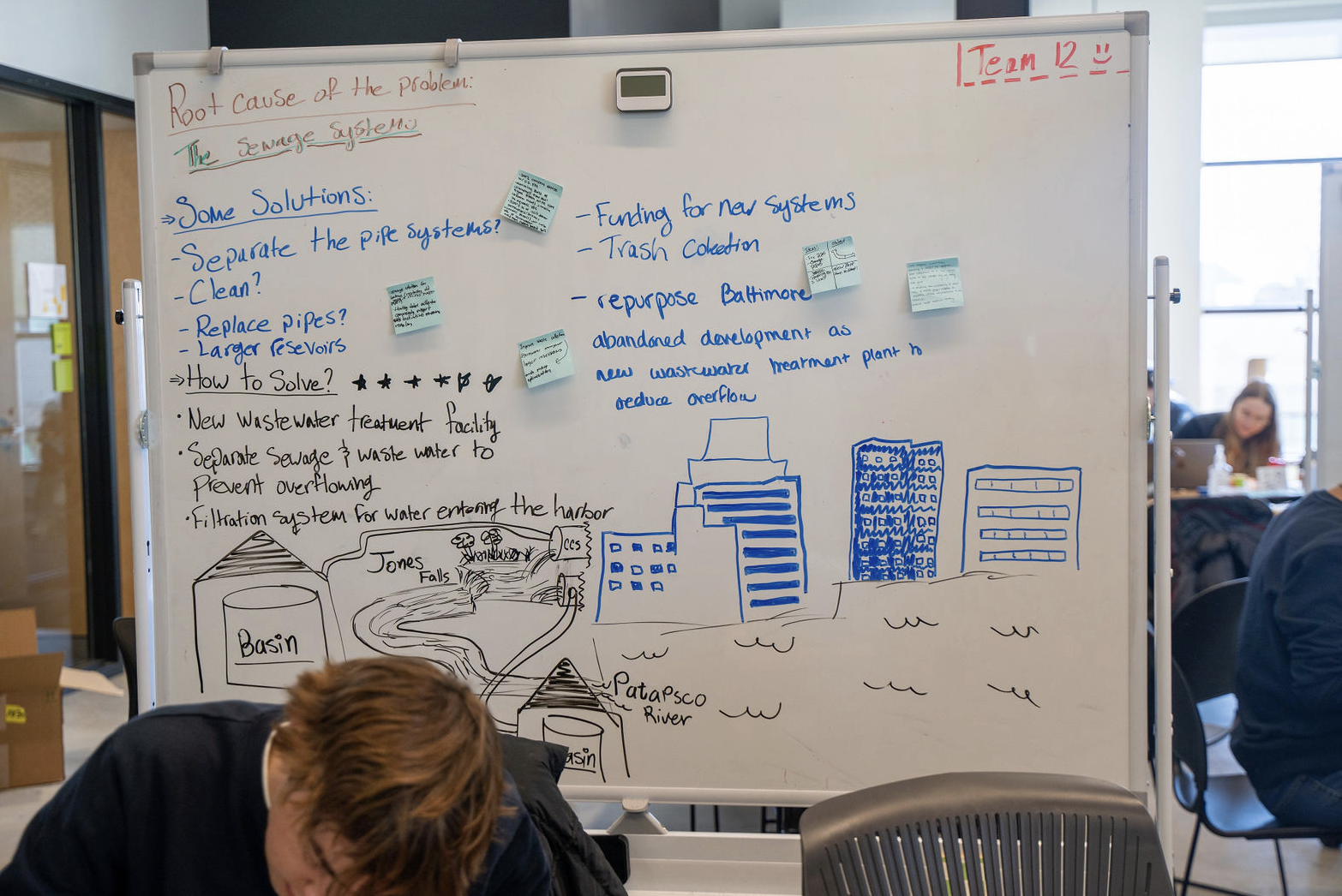
Team 12’s winning public works solution.
Read more about Clark School initiatives:
Published February 20, 2025

